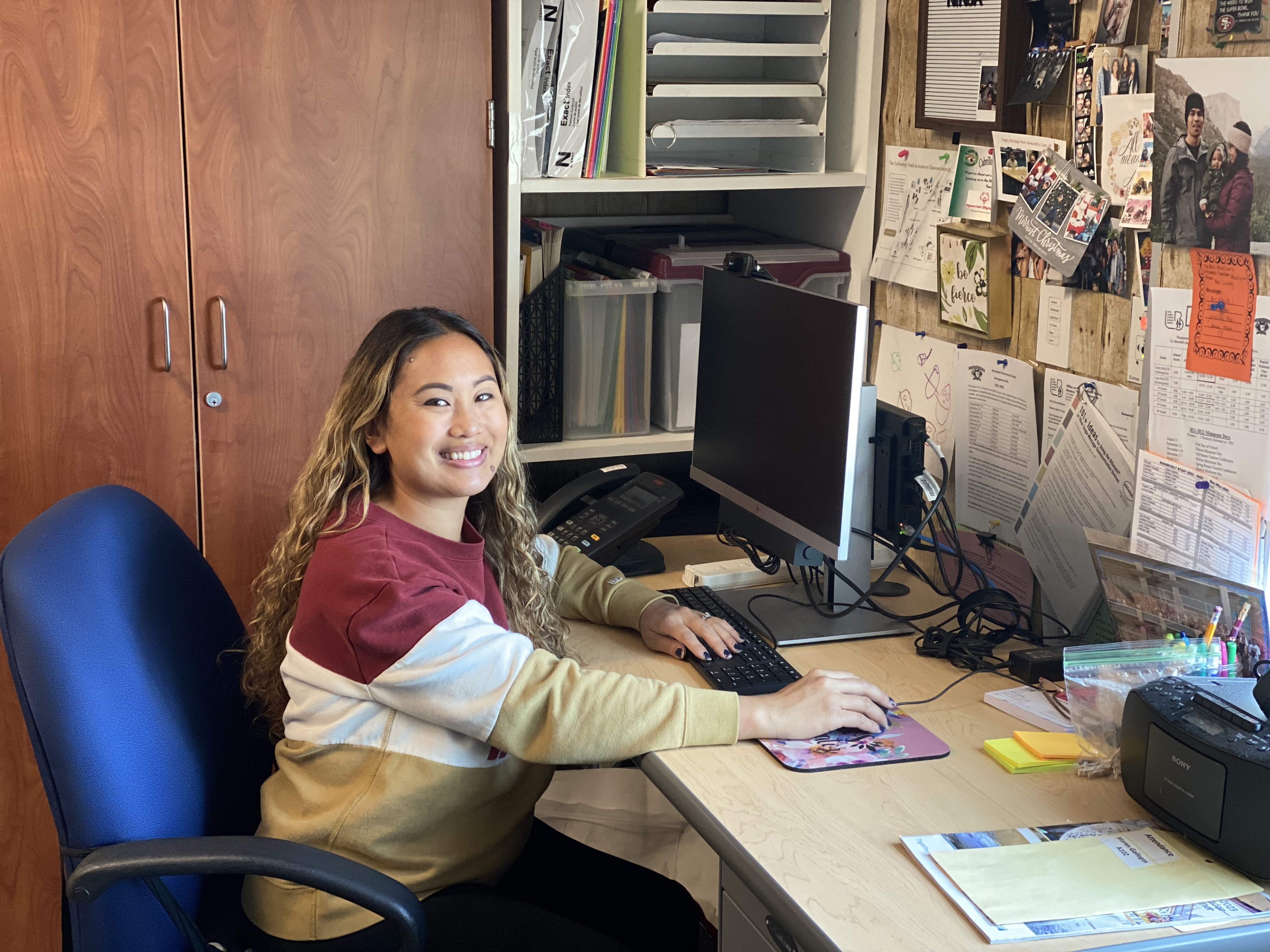Adaptive Equipment for Students with Physical Disabilities
- 1 Comment
- by Rhosemarie
Students on the MOVE!
Our classroom implements the M.O.V.E curriculum to support our students with physical disabilities. M.O.V.E, or Mobility Opportunities Via Education, is an activity based program that supports student’s ability to explore their environment. In this program, students practice transfers, sitting, standing, and walking skills throughout the school day. We use adaptive equipment such as standers, gait trainers, and modified seating for students with physical disabilities.
In this blog post I will share what the M.O.V.E program looks like in our classroom.
Who Participates in M.O.V.E.?
Everyone! Teachers, para educators, and specialists in our program are M.O.V.E trained. We work together with support from our physical therapist and occupational therapist to create a safe environment to learn and develop skills towards independence. Teachers, office and support staff encourage our students to move safely through the campus. All students, irregardless of physical disability in the classroom, participate in the MOVE program.
Purposeful and Meaningful Opportunities
We plan purposeful and meaningful opportunities for students to work on their motor skills daily. Here are some fun ways we’ve implemented the use of adaptive equipment in our classroom!
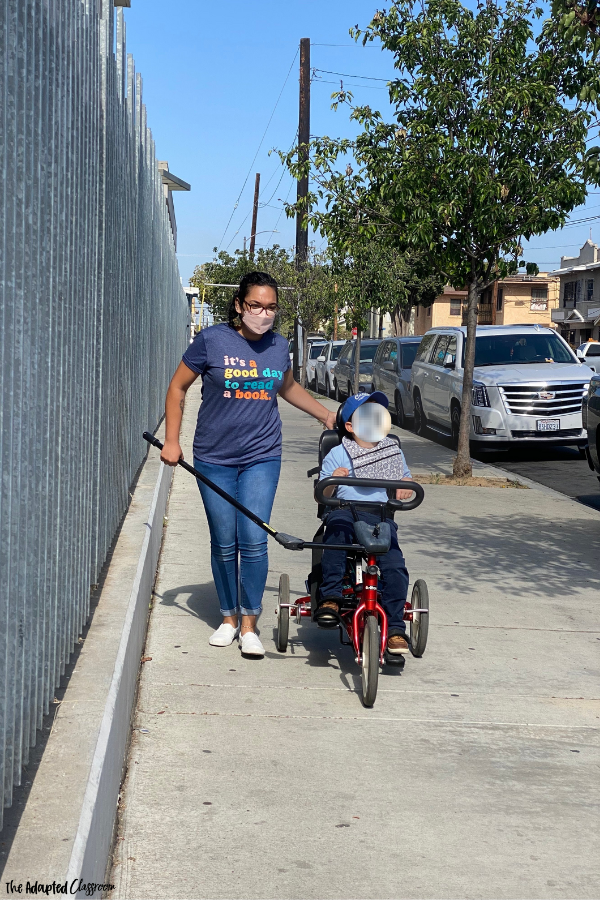
The adapted tricycle is one of our favorites! On a walking field trip to a local library one of our students rode the tricycle to get there. Not only was it a fun mode of transportation it was also therapeutic. The adapted tricycle improves leg strength, posture, balance and range of motion.
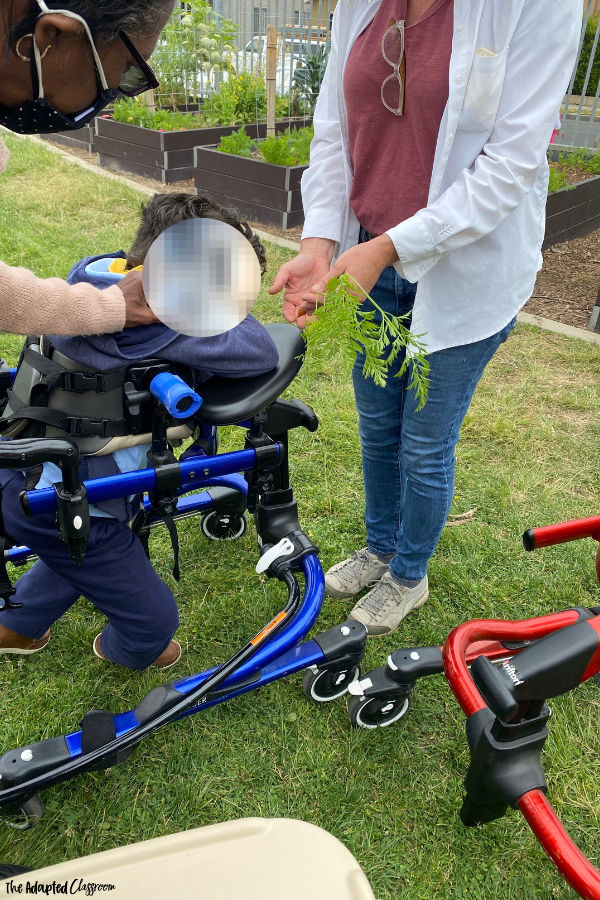
Every now and then we love to stop and smell the roses, or in this case radishes. Our students have the privilege of growing a garden with Ground Education. We take our gait trainers out to the garden and explore the seasonal veggies growing each week. Gait trainers help with proper positioning, weight-bearing and weight-shifting needed for a more natural gait pattern and easier stepping.
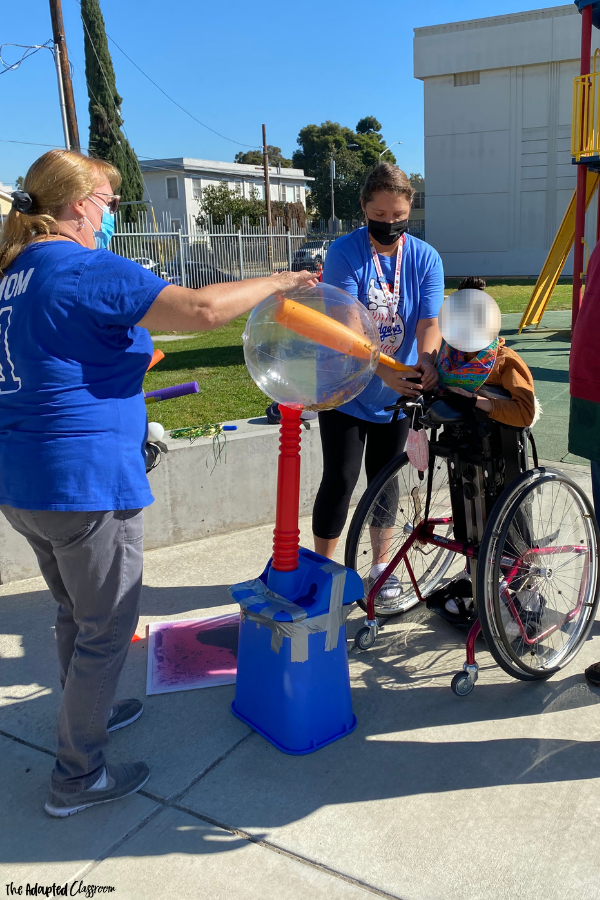
Take me out to the ball game! Our SLP helped create this adapted baseball game for our students. One of our students went up to bat in her mobile stander! A mobile stander makes it easier to engage eye-to-eye with peers, and helps strengthen critical motor skills so a user can progress toward independent standing.
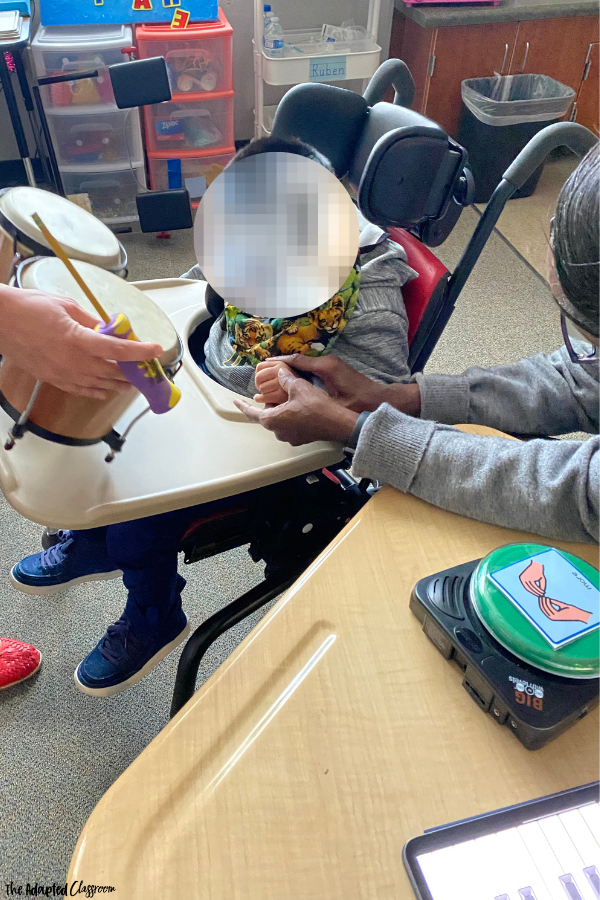
While it may just look like an ordinary chair, the adapted activity chair is the most versatile adapted equipment in the classroom. Here it is helping a student participate in active learning during a music lesson. The activity chair also assists students with transfers, feeding, speech therapy, and sensory processing challenges.
Want to learn more about the M.O.V.E curriculum? Check out the MOVE international website Here
Do you implement the MOVE curriculum in your classroom? Share your favorite activities in the comment section below!
Students on the MOVE!
Our classroom implements the M.O.V.E curriculum to support our students with physical disabilities. M.O.V.E, or Mobility Opportunities Via Education, is an activity based program that supports student’s ability to explore their environment. In this program, students practice transfers, sitting, standing, and walking skills throughout the school day. We use adaptive equipment such as standers, gait trainers, and modified seating for students with physical disabilities.
In this blog post I will share what the M.O.V.E program looks like in our classroom.
Who Participates in M.O.V.E.?
Everyone! Teachers, para educators, and specialists in our program are M.O.V.E trained. We work together with support from our physical therapist and occupational therapist to create a safe environment to learn and develop skills towards independence. Teachers, office and support staff encourage our students to move safely through the campus. All students, irregardless of physical disability in the classroom, participate in the MOVE program.
Purposeful and Meaningful Opportunities
We plan purposeful and meaningful opportunities for students to work on their motor skills daily. Here are some fun ways we’ve implemented the use of adaptive equipment in our classroom!

The adapted tricycle is one of our favorites! On a walking field trip to a local library one of our students rode the tricycle to get there. Not only was it a fun mode of transportation it was also therapeutic. The adapted tricycle improves leg strength, posture, balance and range of motion.

Every now and then we love to stop and smell the roses, or in this case radishes. Our students have the privilege of growing a garden with Ground Education. We take our gait trainers out to the garden and explore the seasonal veggies growing each week. Gait trainers help with proper positioning, weight-bearing and weight-shifting needed for a more natural gait pattern and easier stepping.

Take me out to the ball game! Our SLP helped create this adapted baseball game for our students. One of our students went up to bat in her mobile stander! A mobile stander makes it easier to engage eye-to-eye with peers, and helps strengthen critical motor skills so a user can progress toward independent standing.

While it may just look like an ordinary chair, the adapted activity chair is the most versatile adapted equipment in the classroom. Here it is helping a student participate in active learning during a music lesson. The activity chair also assists students with transfers, feeding, speech therapy, and sensory processing challenges.
Want to learn more about the M.O.V.E curriculum? Check out the MOVE international website Here
Do you implement the MOVE curriculum in your classroom? Share your favorite activities in the comment section below!

